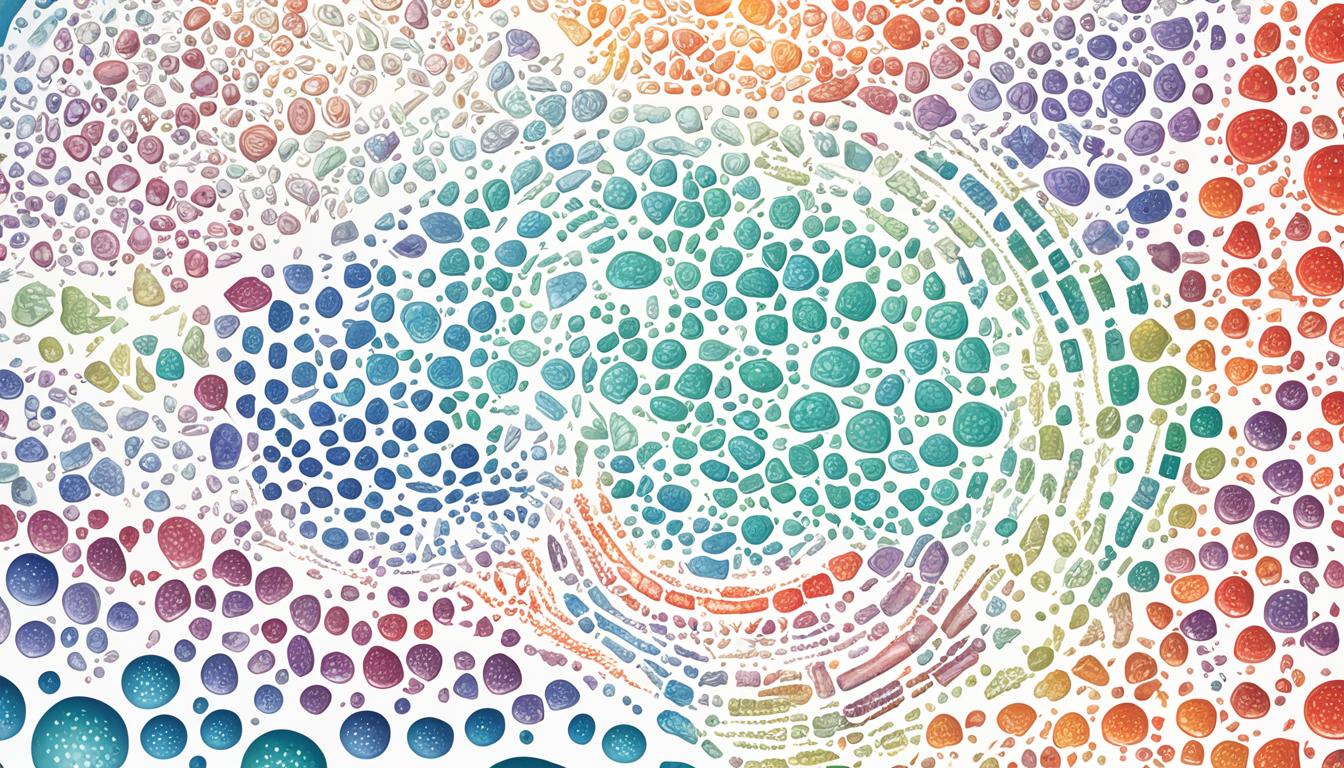Cradle cap is a common skin issue in infants. It shows up as greasy, yellowish, scaly patches on the scalp. Nobody knows the exact cause, but it’s linked to too much oil from the skin and a fungal bug. Remember, it’s not catchy and doesn’t mean the child is dirty or not well-cared for.
This condition usually happens in the baby’s first 3 months. It’s hardly ever a big deal or painful for the baby. Sometimes, cradle cap goes away on its own. But if it stays or gets worse, you can gently wash the baby’s hair with mild shampoo and use a soft brush to remove the patches. For more serious cases, a doctor might suggest stronger shampoos, oils, or lotions. Sometimes, if the area gets red or infected, the baby might need medicine like antibiotics.
Today, scientists are looking at using stem cell therapy to treat cradle cap. Stem cells can help make new skin cells and heal damaged areas. But we need more studies to know if this treatment really works for cradle cap.
Key Takeaways:
- Cradle cap affects infants with greasy, scaly patches on the scalp.
- The cause of cradle cap isn’t clear, but it might happen because of too much oil and a fungus.
- It’s not infectious and doesn’t mean the baby isn’t cleaned or cared for well.
- Some mild cases go away by themselves, but if it gets bad, gentle washing and the right baby shampoo might help.
- For worse cases, doctors can suggest special shampoos, oils, or lotions. Redness or infection might need medicine.
- While stem cell therapy is looked at as a new way to treat cradle cap, we still need better research.
Causes and Risk Factors of Cradle Cap
The exact causes of cradle cap are not completely clear yet. We do know that certain things may contribute to its development.
Overactive sebaceous glands on the baby’s scalp are one factor. They might make too much sebum. This can stop old skin cells from drying and falling off as they should. The extra sebum causes greasy, yellowish scales of cradle cap to form.
Hormones could also be a reason for cradle cap. A baby gets hormones from its mother after birth. These hormones might make the sebaceous glands work more, leading to too much sebum.
A fungal infection is another possible cause. This could happen if the baby has been given antibiotics. Antibiotics can upset the skin’s natural microorganism balance. This can let fungi grow and make cradle cap worse.
Some studies suggest cradle cap could run in families. If there are family members with eczema or asthma, an infant might be more likely to get cradle cap. This points to genetic and inherited factors.
Cradle cap is not caused by allergies, bacterial infections, or not keeping the baby clean. It’s also not dangerous for the baby’s health.
| Possible Causes of Cradle Cap | Risk Factors |
|---|---|
| Overactive sebaceous glands | Family history of eczema and asthma |
| Fungal infection | Use of antibiotics |
| Hormonal factors |
Diagnosis and Treatment of Cradle Cap
Cradle cap is diagnosed with a physical exam. Doctors look for greasy, yellowish scales on the scalp. Mild cases often go away without treatment.
If scales remain, treatment is needed. Washing the head gently with baby shampoo and a soft brush helps. This stops the scales from coming back.
Using stronger shampoos with zinc or selenium sulfide might be advised. Oils or lotions can also help soften the patches. For inflammation or infection, a doctor may suggest medications.
Stem cell therapy is being explored for cradle cap. It aims to repair skin and aid in healing. But, more studies are necessary to confirm its effectiveness and safety.
If parents are worried, they should see a doctor, especially if there are other symptoms. A healthcare professional can give the right diagnosis and treatment plan.
FAQ
Q: What is cradle cap?
A: Cradle cap is a skin condition that affects babies. It shows up as greasy, yellow, or scaly patches on the scalp.
Q: What causes cradle cap?
A: We’re not sure of the exact causes. Some things like too much oil, hormone issues, a fungus, and family history might play a part.
Q: How is cradle cap diagnosed?
A: Doctors can spot cradle cap just by looking at it. Seeing the greasy, yellow scales on the skin is usually enough to know what it is.
Q: What are the treatment options for cradle cap?
A: Often, cradle cap goes away on its own. But if it doesn’t, gentle washing with baby shampoo and brushing can help. In stronger cases, a doctor might suggest special shampoos or even medicines.
Q: Is stem cell therapy an option for treating cradle cap?
A: Stem cell therapy is being looked at for cradle cap. Stem cells could help fix the skin and speed up healing. But, we need more studies to see if it’s safe and works well for cradle cap.

